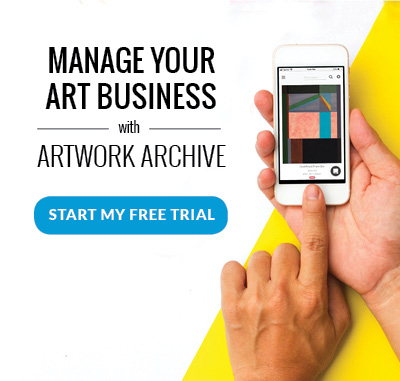 |
Corrina Thurston is an artist, speaker, and author working out of Vermont, USA. Check out her book, How To Crush Self-Doubt and Gain Real Confidence, and learn more about her, her artwork, or her books on her website. |
Self-doubt plagues us all.
Artists are especially prone to self-doubt due to the nature of our work. We pour our hearts and souls into our creations—whether it’s painting or sculpting or writing or crafting—and then have to find the courage to put that work out into the world, which is full of critics and judgment and rejection. We also tend to work alone, crammed in our studios, hovering over our worktables, where the negative thoughts and our own high expectations can whittle away at our creative confidence.
What to do? Those negative thoughts can easily spiral out of control, and suddenly you’re turning down a remarkable opportunity because you’re too nervous or your internal monologue is saying you’re not good enough.
Here are seven techniques to help boost your self-confidence as an artist and creative entrepreneur and crush your self-doubt.
1. Stop Comparing Yourself to Other Artists.
Social media is undoubtedly a great tool for artists. It can be inspiring to look at the artwork of other artists, but make sure you don’t fall into the trap of constantly comparing your work to that of someone else. When you have been working in your medium for many years, and then you see other artists seemingly creating masterpieces overnight, it can be disheartening.
Don’t let that happen!
You are your own artist with your own journey, and you can't ever be sure of someone else's journey from behind a screen. Instead of comparing and feeling negative about your own work, use their skill as inspiration to get back to practicing yours.
There will always be people that are more skilled than you and you will always be more skilled than others. Comparison doesn't change that. Only focusing on yourself and your own practice will make you better.
2. Stop Having Such High Expectations of Yourself.
Sure, having high expectations for yourself can be a good thing, in the right circumstances. Of course, I expect myself to be a good person, to help people when I can, to be kind and considerate.
But you know what?
I’ve stopped having expectations about things like how many people show up to one of my art events, or how many likes I’m going to get on a social media post, or exactly how a piece of artwork is going to turn out.
Why? Because the more you have expectations about these things, the more likely you’re going to be disappointed.
If only 15 people come to one of my workshops, that’s okay! I’m going to treat that workshop exactly the same as I would with a larger number and those people will get even more one-on-one attention. If a piece of artwork doesn’t turn out exactly the way I had anticipated, that’s okay! Art is meant to surprise you and change and even as the artist you don’t always have as much control over the end product as you might think. There’s nothing wrong with that, you just have to learn to roll with it.
3. Take Breaks and Move Around.
There’s nothing worse for your body than being cooped up in the same position for hours. Take breaks!
Stretch and go for a walk and get your blood flowing. If you’re getting frustrated with a piece of work, this is especially important. Walking clears your mind, helps get rid of toxins, helps the muscles in your hands function better because of the blood flow—and you also come back with fresher eyes.
4. Join a Critique Group.
This isn’t for everyone, but it works great for some artists. Find a critique group either online or in your area and participate. It’s amazing what you can learn about your own work when you start to see it from someone else’s viewpoint! The things that stand out to you might not be the same that stand out to them.
5. Hit That Send Button.
As a marketing consultant and author of two art marketing books, I want you to be hitting that send button on your email account many times a week!
Write and send gallery exhibit proposals, event proposals, grant applications, collaboration requests, retail requests, and press releases to your local and regional media (newspapers, magazines, podcasts, radio, TV, blogs), etc.
Putting yourself out there is an emotional challenge. It takes guts to push that send button. Do it anyway. The more you do it, the easier it’ll become. You will hear no. Do it anyway. The more you hear no, the less it will bother you and the faster you can get to the yes's.
6. Recognize What Rejection Really Is.
In my first book, I suggest that rejection is, “what happens when what you’re offering is not quite what the other person or company is looking for.”
That’s it.
It doesn’t mean your work is bad. It doesn’t mean they don’t like you. It simply means what you’re offering isn’t quite right for them.
Reach out and ask them why in order to learn from it and hopefully improve future proposals, then throw that rejection letter on your mounting pile (more rejections is good because it means you’re putting yourself out there!) and move on! There’s no point in dwelling. FYI, if I were still keeping track of my rejection letters as I did in the beginning, it would take over my whole studio. But the more rejections you get, the more acceptance letters you’re likely to get too.
7. Learn some overall confidence-boosting techniques.
In my book, How To Crush Self-Doubt and Gain Real Confidence, I talk about a number of techniques to boost your confidence, not just as an artist, but as a person. Some of the best ones include:
- Power poses. Stand like Superman—hands on your hips, back straight, head up, and shoulders back— for at least two minutes. This will actually change the chemistry in your body in such a way that makes you feel calmer and more confident.
- Positive “I am” statements. Say or write down some positive statements about yourself every day. This is hugely effective, even if you don’t feel they’re true at the moment. Even reading them helps, so some examples include: “I am strong,” “I am important,” “I am talented,” “I am capable,” and “I am worthy.”
- Socialize. Even if you can’t meet in person, try to find ways to socialize. Many artists are solitary types, but it can be detrimental to our mental health and our creative spirit to be alone too much of the time. Socializing is important. Talking is important. Humans—even those of us who identify as introverts—are social creatures and we need that interaction. Get out of your studio if you can, laugh (very important!), eat food, snuggle your loved ones, and envelop yourself in that connection.








